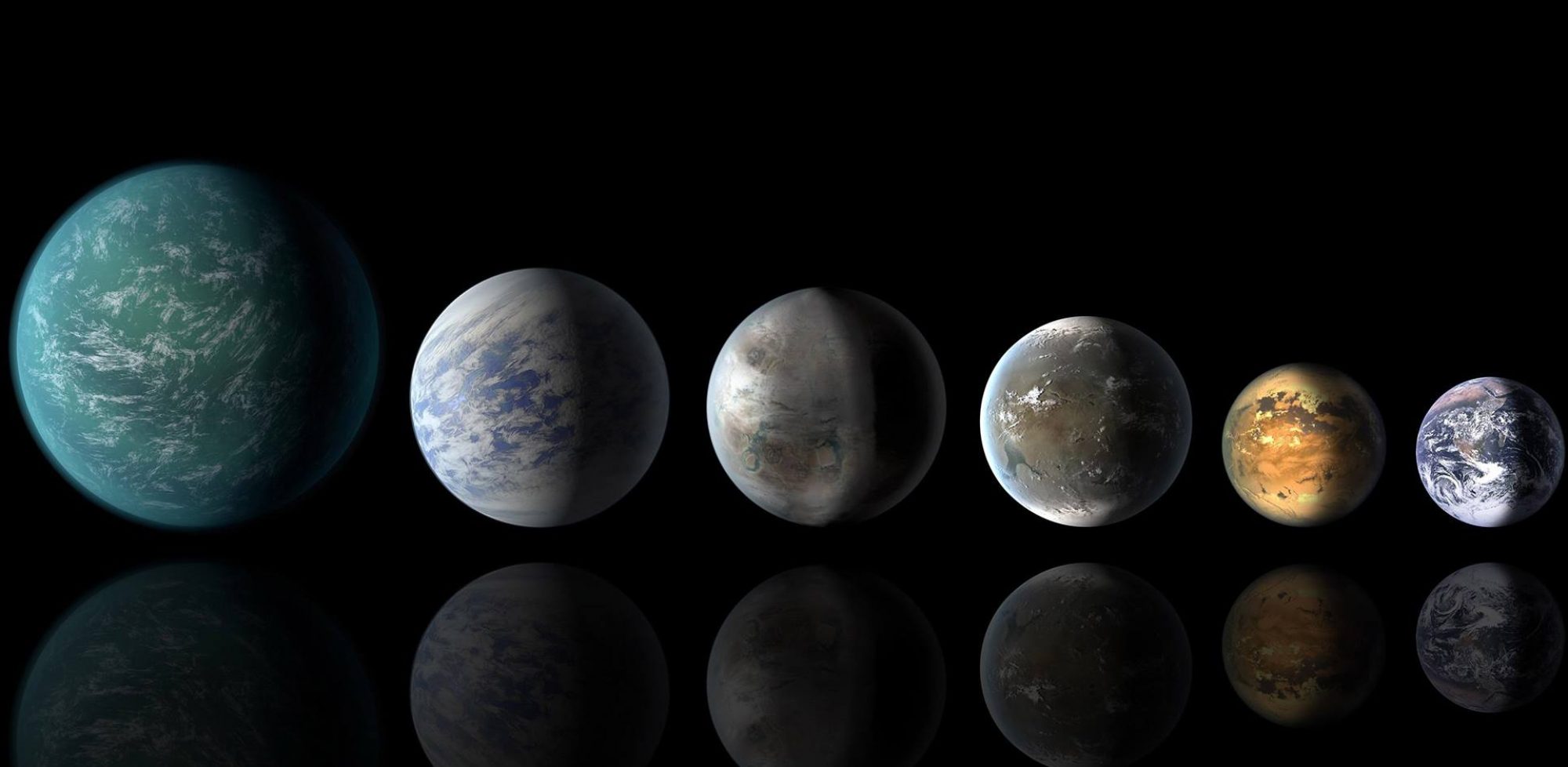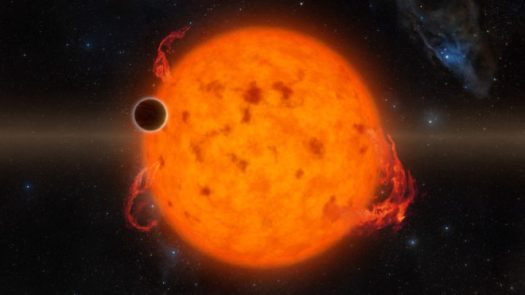
When it comes to the study of exoplanets, it’s common knowledge that the host stars don’t get much respect.
Yes, everyone knows that there wouldn’t be exoplanets without stars, and that they serve as the essential background for exoplanet transit observations and as the wobbling object that allows for radial velocity measurements that lead to new exoplanets discoveries.
But stars in general have been seen and studied for ever, while the first exoplanet was identified only 20-plus years ago. So it’s inevitable that host stars have generally take a back seat to the compelling newly-found exoplanets that orbit them.
As the field of exoplanet studies moves forward, however, and tries to answer questions about the characteristics of the planets and their odds of being habitable, the perceived importance of the host stars is on the rise.
The logic: Stars control space weather, and those conditions produce a space climate that is conducive or not so conducive to habitability and life.
Space weather consists of a variety of enormously energetic events ranging from solar wind to solar flares and coronal mass ejections, and their characteristics are defined by the size, variety and age of the star. It is often said that an exoplanet lies in a “habitable zone” if it can support some liquid water on its surface, but absent some protection from space weather it will surely be habitable in name only.
A recognition of this missing (or at least less well explored) side of the exoplanet story led to the convening of a workshop this week in New Orleans on “The Impact of Exoplanetary Space Weather On Climate and Habitability.”
“We’re really just starting to detect and understand the secret lives of stars,” said Vladimir Airapetian, a senior scientist at the Goddard Space Flight Center. He organized the highly interdisciplinary workshop for the Nexus for Exoplanet Space Studies (NExSS,) a NASA initiative.
“What has become clear is that a star affects and actually defines the character of a planet orbiting around it,” he said. “And now we want to look at that from the point of view of astrophysicists, heliophysicists, planetary scientists and astrobiologists.”
William Moore, principal investigator for a NASA-funded team also studying how host stars affect their exoplanets, said the field was changing fast and that “trying to understand those (space weather) impacts has become an essential task in the search for habitable planets.”
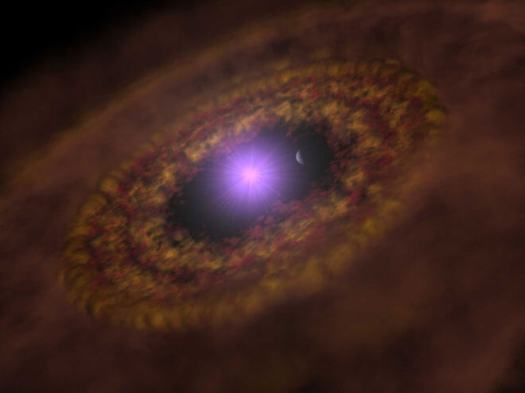
So with space weather in the forefront, the workshop grappled with issues not frequently on the exoplanet agenda including the formation and protective effects of magnetic fields around planets; how, why and at what rate potentially life-supporting elements and compounds are likely to “escape” from bombarded exoplanets; and the extent to which those solar winds in particular speed that escape process.
Direct exoplanet measurements of these sun/planet dynamics remains sparse to entirely absent. That’s why much of the workshop discussion has centered around what’s known about our solar system — the workings of our sun and the way our solar dynamics impact planets.
This quite mature science and provides an exoplanet road map of sorts, though one always used with the caveat that what happens in and around our sun might be quite different than what’s happening around a sun many light years away.
We’ll return to the workshop, but first a little stellar science:
Our sun is not only a nuclear reactor producing enormous heat, but also has massive and very active electromagnetic fields in its outer corona.
When oppositely directed magnetic fields meet and become “reconnected,” an intense flare of high-energy photons can shoot out at a speed that will bring them to Earth in 20 minutes to several hours. Often, a coronal mass ejection will accompany the flare. These vast CMEs consist of bubbles of magnetic field and billions of tons of of super-heated plasma (protons and neutrons), and they will arrive on Earth in one to three days.
In addition, the million degree heat of the sun’s outer corona produces a solar wind that also sends high-energy particles into space. Unlike flares and CMEs, the solar wind is always blowing.
These phenomena and more would fry Earth were it not for our own protective magnetic field. But this space weather can wreck havoc with satellites, GPS and electric power grids. And it can potentially harm unprotected astronauts in space. Not surprisingly, the study of space weather is a hot subject now.
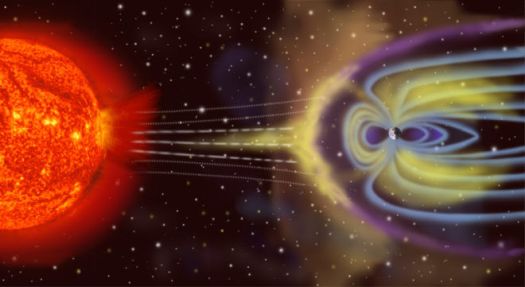
The same or similar space weather is inferred to exist in other solar systems as well. Flares have been actually detected, but workshop scientists said the CMEs have not been measured so far on the host stars of exoplanets.
The effects of space weather are especially important when it comes to red dwarfs — smaller and cooler stars that make up some 75 percent of the stars out there.
These smaller stars generally form exoplanets that orbit quite close in, leaving them in danger of a complete sterilizing from solar wind or other space weather. Adding to the risk, red dwarfs are generally very active in their early lives, throwing out large and powerful flares and more. Only later do they become far more sedentary, long-lived and seemingly good targets for habitable exoplanets.
But while an exoplanet of a red dwarf might orbit in a habitable zone later in its life and have other characteristics of habitability, the planet is considered unlikely to ever recover if it was sterilized eons before by a solar flare.
Space weather is often discussed in terms of the damage it can do, but the same high energy protons that can sterilize one planet may be able, through photochemistry, to create some of the chemical building blocks of life.
Airapetian and Goddard colleague William Danchi published a paper in the journal Nature in June proposing that solar super-flares not only warmed the early Earth to make it habitable, but also provided the vast amounts of energy needed to combine evenly scattered simple molecules into the kind of complex molecules that could keep the planet warm and form some of the chemical building blocks of life.
What’s more, Gregg Hallinan of Caltech proposed future searches for protective magnetic fields as way to identify potentially habitable exoplanets. He said that as techniques improve for detecting stellar flares, they should as well for observing stellar CMEs and ultimately planetary magnetic fields.
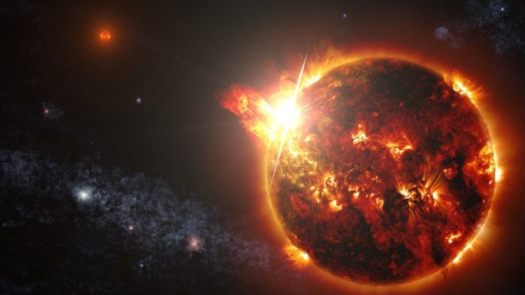
Bill Moore’s “Living, Breathing Planet” team was well represented at the workshop. While Moore is a professor at Virginia’s Hampton University’s Department of Atmospheric and Planetary Sciences, his NASA-sponsored team includes scientists from six other institutions along the East Coast.
The talks by team members focused on how and why material escapes from planetary atmospheres, and the implications of that escape. On Mars, for instance, hydrogen escape due to solar winds is a major factor as water and other molecules break apart and send that lightest element into space.
One result that exoplanet scientists worry about is that the escaping hydrogen can leave behind reservoirs of oxygen that might lead to misleading conclusions. An atmosphere filled with oxygen has long been seen as a promising one in terms of extraterrestrial life; indeed, oxygen and ozone are considered essential biosignatures of life.
But if oxygen can also be left behind when an atmosphere is stripped of hydrogen, then that clearly must be taken into account. So models for detecting actual biosignatures on exoplanets now include oxygen and other compounds together, rather than oxygen alone.

“As the field turned to habitability on exoplanets rather than solely detection, we had to start worrying more about the host star. The issue became not detection but how to live around that star, which we’re finding is, not surprisingly, a very complex question.”
Inevitably, that question involves not only current space conditions, but the evolution of the exoplanet and its solar system. In particular, that requires an understanding of the stellar radiation environment that the planet formed in and has lived in, as well as what other stars might be close by.
He offered as an example the exciting discovery of a planet in the habitable zone around the star Proxima Centauri, the closest star to our own. Teams around the world are now studying the planet for potential habitability, and they may get some promising results.
But Moore’s group is looking at the Proxima Centauri planet from the perspective of its environment, and that it’s located in what is essentially a three-star cluster. That means the planet has potentially been exposed to the forces of all three stars.
“We see a planet sitting out there on its own, and it seems to be a closed system. But that’s not true; it’s related to the stars. The Proxima planet is a case in point. We’ve done some work and have found a very complicated environment to live in — to say the least.”
Also coming next week from the New Orleans conference: Using host stars to find the most tempting targets for observation.
